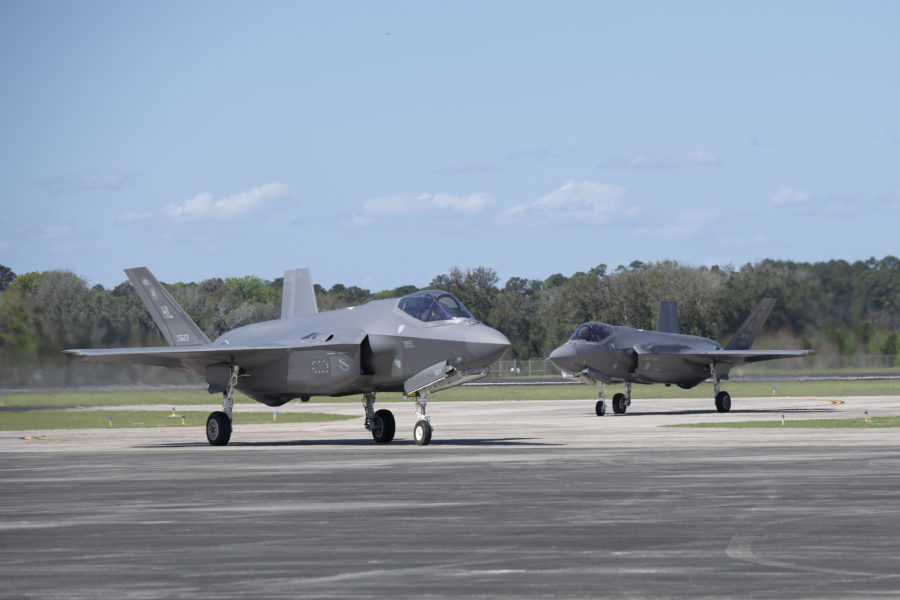Lockheed Martin will deliver fewer F-35s than expected in 2023 due to delays with the Tech Refresh 3 update, as well as the three-month pause in engine deliveries, but Chief Executive Officer Jim Taiclet expects the government will sign an F-35 Performance Based Logistics contract by the end of the year.
Speaking on a first-quarter earnings call with financial reporters April 18, Taiclet said “we do expect a fraction of total expected 2023 deliveries to be impacted later this year, due to both software maturation related to Technology Refresh 3 and hardware delivery timing.”
He did not specify how many aircraft the company would be short, but the goal for delivery in 2023 was 156 airplanes.
Part of the delay is also due to the three-month halt in F135 engine deliveries from Raytheon’s Pratt & Whitney to Lockheed, which Tacilet noted are provided as government-furnished equipment. Lockheed was prevented from conducting delivery test flights—and hence, deliveries—of F-35s for three months while Pratt investigated a harmonic vibration problem discovered after the crash of an F-35B at Lockheed’s Fort Worth, Texas plant in December 2022.
Company chief financial officer Jay Malave added later that the smaller number of deliveries were also due to Tech Refresh 3 (TR-3) “hardware delivery timing.” Taiclet noted that TR-3 is in flight testing now.
The TR-3 includes new computers, processors, and software that provide the basis of the F-35’s Block 4 upgrade, which in turn will feature new sensors, expanded electronic warfare, and information gathering and dissemination capabilities.
“We’re in the … very late innings of fully implementing” TR-3, Taiclet said. The upgrade “gives us much greater capability to really make the F-35 a true ‘edge compute’ node, and an open architecture ‘Internet of Things’ construct system.”
Taiclet outlined the three elements of an edge-computing node in a 5G system as
- Data storage onboard the vehicle
- Data processing onboard the vehicle
- Multi-pass ability to get data back to the cloud
All of that is “coming together” in the form of many subcomponents, he added—it’s a “leading edge” accomplishment for the aerospace industry, he said.
“There have been some delays in some of the hardware and software,” Taiclet acknowledged. “But we’re really in the in the very late innings of getting this all together. We’re literally in flight test right now. And we will…wrap all that up by October or December.”
After that, “we’ve got to see what the test results are, and work with the government to define exactly when everybody’s ready to go and implement in our production system … those software loads, and that’s where we’re at now.”
Taiclet also stressed the project’s high degree of difficulty and said the firm is “going to make sure that it’s done right.”
Given the planned increases in U.S. purchases of F-35s in fiscal year 2024—83 airplanes—and future budgets, as well as international orders for F-35s, the program is in good shape, Taiclet said, noting Canada’s decision to buy 88 of the jets and Germany’s recent order.
He did not, however, discuss the Air Force’s decision not to proceed with a new engine for the F-35.
